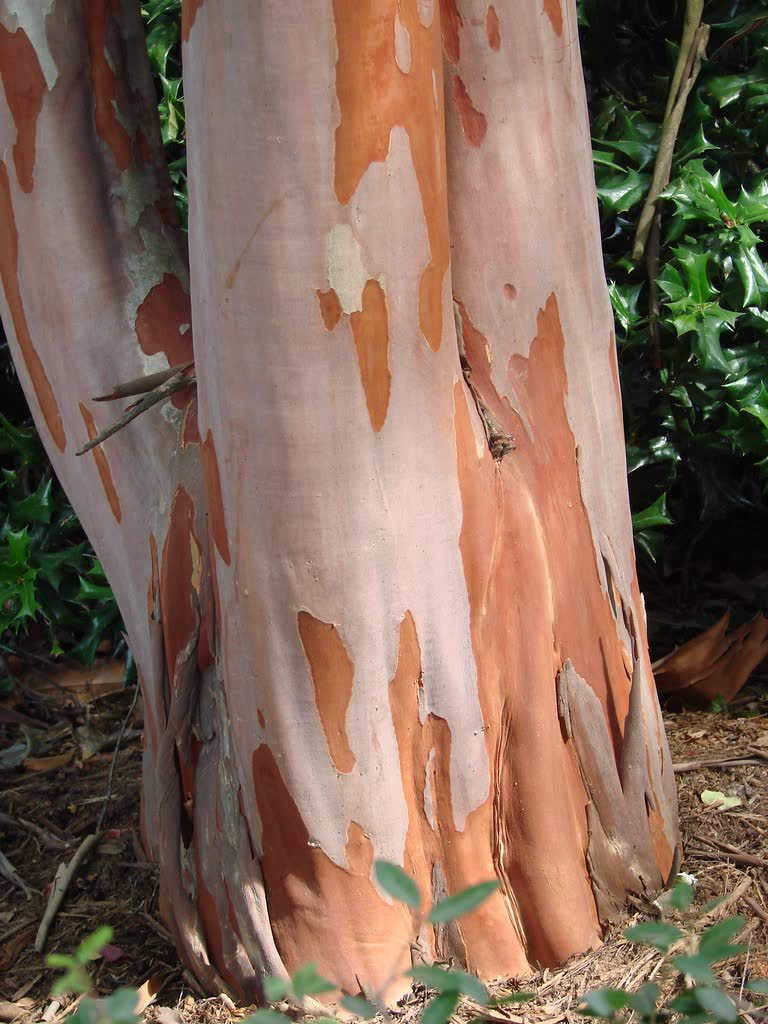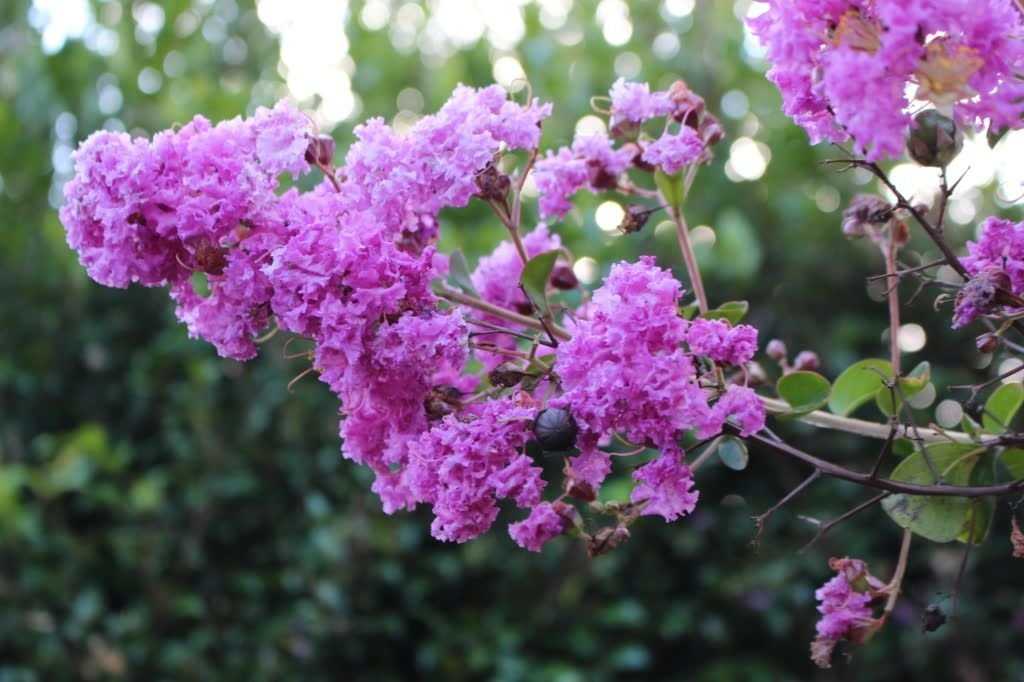
Crepe Myrtles are a very hardy plant that can be grown in most climates. They are native to southeast Asia and northern Australia and are known for their beautiful flowers and amazing mottled trunks. Together, these provide both beauty and interest all year round.
Plant Details
Common Names: Crepe Myrtle, Indian Lilac, Crape Myrtle.
Scientific Name: Lagerstroemia indica
Plant Description
Crepe Myrtles are deciduous; they drop their leaves during autumn and then grow new leaves during the spring. Typically, they will grow up to 8m (25’) tall, but they can be pruned in order to maintain them as a shrub at your desired height. This enables them to be grown as either a tree, shrub, miniature or even a standard plant
Flowering will occur during mid summer and can last for approximately 2 months, although this will depend on your climate and conditions. Flowers are available in a range of colours including; white, pink, red and mauve. But all Crepe Myrtle flowers have petals that are ‘crinkly’ and crepe paper like. Of course, this is where it gets its name from.

Climate
While crepe myrtles particularly like hot and dry climates, many are quite tolerant of the cold. But if you do live in a cold region, it is best to select an area that has maximum exposure to the sun and its warmth. Crepe myrtles are also quite drought tolerant.
Planting Guide
The best time to plant Crepe myrtles is during early spring, or late autumn. This will enable them to establish themselves prior to flowering that typically occurs late spring into early summer.
Plant crepe myrtles directly from a pot, or sometimes they are available as a bare-rooted plants in winter. It is important to give them plenty of water in order to get them started, but once established you will find that they require minimal maintenance.
Caring for Your Crepe Myrtle
Water
Crepe myrtles have an 'average' need for water - water deeply when the top 3cm of soil has dried out
Fertilizer
Fertilize once every 2-3 months during the growing season.
Pruning
Trim the diseased, withered leaves every month. Otherwise, they respond very well to pruning; including very heavy pruning. Don't be afraid to prune them down to bare branches - you will be rewarded with beautiful heavy flowering the following season.
Planting Time
Early spring, late autumn
Propagation
They can be very easily propagated by division, cuttings and sowing seeds.

Growing in Pots
Crepe myrtles can be very successfully grown in pots. They should be repotted every 2 to 3 years in a pot size that is 2 to 3 times the size of the root ball. You must ensure that it has good drainage.
Positives
- Beautiful flowers and stunning bark on trunks providing something interesting year round.
- Can be pruned to desired shape and size.
Negatives
- Some of the older varieties are susceptible to powdery mildew and and do sucker. Therefore you will need to remove suckers as they appear.
I am an educator and passionate gardener and traveler. Throughout my adult life, gardening has been my passion, therapy, drive and source of purpose. Even as a child I had an intrinsic interest in plants and a desire to understand what makes them grow.
I distinctly remember the moment this began - my family was on one of our regular road trips from Hervey Bay; Australia. We were driving past a field of sugar cane. Dad pulled the car over and we cut a couple of sugar cane stems and brought them home for a treat. To be honest, I didn’t really like the taste, but I did want to try and grow it; and that is exactly what I did. It was then that my fascination, interest and passion for gardening and understanding plants began.
Fast forward a few years and I studied biological sciences and began what would be a 36 year career as a Biology educator. From this, I don’t only love gardening, but I also love helping others learn about gardening. I am also always looking for new ways to develop my own gardening knowledge. I like to think I am truly a life-long learner.
Fundamental to my beliefs about education is that learning is often best done as a part of a community - learning from others, and helping others to learn. It is this type of community that I hope iCultivate will be for its members - a community of gardeners, keen to share their gardening knowledge and wanting to learn about new ways to garden - a community built on the love of gardening.











Get involved!
Comments